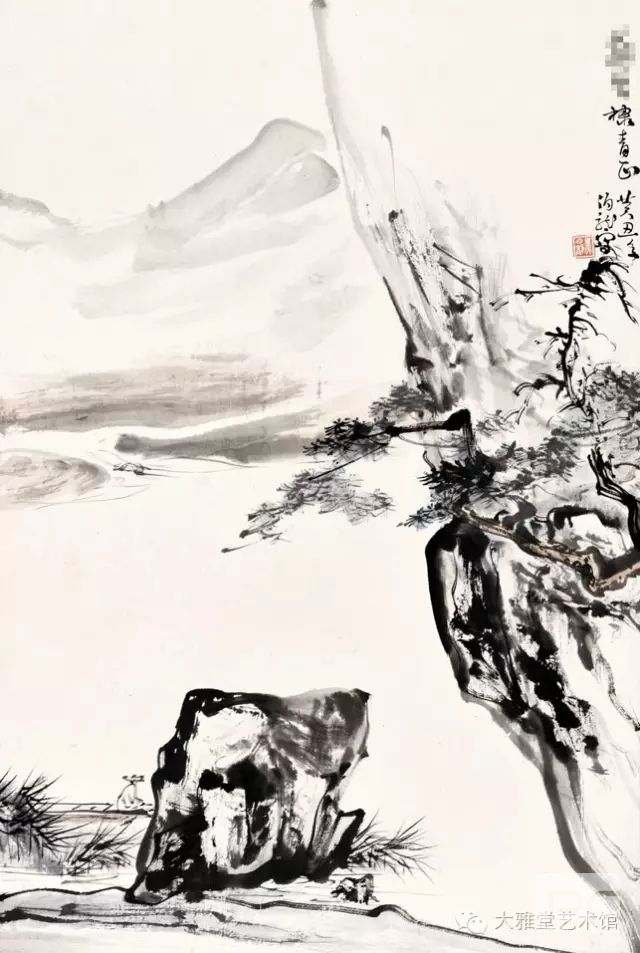学会看国画
Learn to see Chinese painting
“观千剑然后识器,操千曲然后知音。”又曰:“熟读唐诗三百首,不会写诗也会吟。”其间不谋而合地说出了一个道理:对事物的了解、学习,要尽或许凭借事物本身。赏读国画也当如此,咱们应了解它是什么人画的,怎样画的,画的是什么等等。
"Watch thousand sword and then recognize the instrument, fuck thousand songs and then a bosom friend." He said, "three hundred poems in Tang Dynasty can not be written or written." In the meantime, it coincides with a truth that the understanding and learning of things should depend as much as possible on the things themselves. So is the case with Chinese painting. We should first understand who painted it, how it was painted, what it was painted, and so on.
造纸术的创造使“纸”成了国画的重要载体。绘画得到开展和普及,很多画工呈现了。他们师授相传,职业相扶,从事例如建筑、纺织、陶瓷等各类有用场所与器用的装饰性绘画。他们以画业为生,其间也有不少名师大师,专门从事画稿(古称“粉本”)的创造。这类绘画确立了国画的基本体裁与款式,被称之为“画匠”或泛称“匠作画”。自唐代末年开端,逐渐呈现了“宫殿画院”的组织形式。有了以画入仕与以画营生的专门画家,他们有较强的绘画能力与谨慎的绘制法度,对国画技艺的形成、完善与标准有不可磨灭的效果。他们的作品一般呈现上班丽规整的相貌与较高的绘画技术,常常会被作为民间画工与画匠的“粉本”与“画谱”而一再传达。这类绘画也因此而泛称为“院体画”或“画师画”。自宋元开端,很多的文人士大夫开端进入国画范畴。他们不以画业营生,反而愈加注重国画对心灵的干涉与对文明的造就。他们有较高的文明素质,寻求独立自在,作品有共同的画法与特性寻求,注重诗文、书法与篆印对绘画的影响与造就,他们的许多作品与建议得到了较广泛的社会认同并产生了深远的社会文明影响。后世一般将其称之为“文人画”或“士夫画”。
The creation of paper making made paper an important carrier of Chinese painting. Painting has been unprecedentedly carried out and popularized, and many professional artists have appeared. They teach legends, support each other professionally, and engage in decorative paintings of various useful places and utensils, such as architecture, textiles, ceramics and so on. They make a living in the art industry, during which there are many famous masters, specializing in the creation of drawings (ancient called "pink copy"). This kind of painting establishes the basic genre and style of Chinese painting and is called "painter" or "craftsman painting". Since the end of the Tang Dynasty, the Royal form of "palace painting academy" has gradually emerged. With the professional painters who make a living by painting, they have strong painting ability and cautious drawing method, which has an indelible effect on the formation, perfection and standard of traditional Chinese painting skills. Their works generally present the regular appearance of the office and high painting skills, often as folk painters and artists of the "powder book" and "painting score" and again conveyed. This kind of painting is also known as "courtyard painting" or "painter painting". Since the beginning of song and Yuan Dynasties, many literati and scholars began to enter the category of Chinese painting. Instead of drawing jobs, they pay more attention to the intervention of Chinese painting and the creation of civilization. They have a higher quality of civilization, seek independence and freedom, works have a common painting and characteristics to seek, pay attention to poetry, calligraphy and seal on the overall impact of painting and cultivation, many of their works and suggestions have been widely recognized by the community and produced a far-reaching impact on social civilization. Later generations generally call it "literati painting" or "Shi Fu painting".

古代将按体裁分类的国画称为不同的“门”或“科”。在唐代,国画被列为六门,即人物、房屋、山水、鞍马、鬼神、花鸟等。到了元代,已开展成为十三科了。自明清以来,国画按体裁分类,大体上可分为人物画、山水画和花鸟画3大类体裁,它们又各自容纳了古今很多的国画体裁。人物画包含了全部古今中外的前史人物与实际人物;山水画包含了全部天文地理作品中的山川名胜,故事传说中的海外奇境;花鸟画包含了花鸟虫鱼、疏果干鲜、珍禽奇兽,以致各类人工器用、佛道法物、芥子微尘、清供博古、断简残篇等等。从中看来,国画体裁几乎是不乏其人、无所不包了。
In ancient times, traditional Chinese paintings classified according to genres were called "doors" or "families". In the Tang Dynasty, Chinese paintings were classified into six categories: figures, houses, landscapes, pommel horses, ghosts and gods, flowers and birds. By the Yuan Dynasty, it had become a thirteen branch. Since the Ming and Qing Dynasties, traditional Chinese paintings have been classified into three categories: figure painting, landscape painting and flower-and-bird painting. The figure paintings include all the historical and practical figures of ancient and modern China and foreign countries; the landscape paintings include all the mountains and rivers in the works of astronomy and geography, and the overseas wonders in the legend; the flower and bird paintings include flowers, birds, insects, fish, dried fruits, rare birds and beasts, and so on, all kinds of artifacts, Buddhist and Taoist rituals, mustard dust, and purging for Bogu. And so on. From this point of view, there are almost no shortage of Chinese painting genres.
诀曰:“欲求画魂,须识画体。知画六要,二曰识体。画为人作,可随人分。社会分工,各有出身。工巧匠作,官吏杂陈。先范百工,匠作逞强。文明开展,画渐专门,官举民倡,院画才生。生计无忧,功利无常,更求高逸,绘画乃文。匠俗文雅,渐成世论,院体工丽,熟能巧生。疏密二体,各有传承,工笔筒笔,逐步而分。简笔画法,世呼写意,兼工代写,又作别论。体裁分类,自古使然。
He said: "to paint the soul, we must know the style of painting. Six is knowledge and two is understanding. Painting can be done as a human being. Social division of labor has its origins. A skilled craftsman is a miscellaneous official. First, fan Bai Gong, and the craftsman make a show of strength. Civilization is developing, painting is becoming more specialized, and officials are advocating for the people. Living without worry, utilitarian impermanence, more demanding, painting is literature. The craftsman is vulgar and elegant, and gradually becomes the world theory. The two bodies are dense, each has its own inheritance. In the simple strokes, the world calls for freehand brushwork. Genre classification, since ancient times.
唐分六门,元十三科,今分三类,生生不停。人物山水,花鸟并排。前史传说,帝王圣贤,妖魔鬼怪,佛道神仙,肖像绣像,文载口传,类属人物,丰富无边。古树名刹,名山大川,田园村野,海外奇迹,神仙洞府,阴间深渊,异域形胜,佛国仙山,皆属山水,然有可观。花鸟虫鱼,蔬果干鲜,清供博古,断筒残篇,水陆禽兽,山海精灵,祥禽瑞兽,龙凤龟麟,人世器用,芥子微尘,皆属花鸟,有繁有简。古来分料,皆可类属,既合史迹,法理周全。画之体要,天经地义。
The Tang Dynasty is divided into six divisions, thirteen yuan and three families. Character landscape, flowers and birds side by side. Prehistoric legends, emperors and sages, demons and monsters, Buddhist and Taoist immortals, portraits embroidered, oral, generic characters, rich. Ancient trees and famous temples, famous mountains and rivers, idyllic villages, overseas wonders, immortal caves, the abyss of the underworld, exotic sights, Buddhist immortal mountains, are mountains and rivers, but there are considerable. Flowers, birds, insects, fish, dried vegetables and fruits, Qing Dynasty Bogu, broken tube remnants, land and water animals, mountain and sea elves, auspicious birds, auspicious animals, dragons, chickens and turtles, human utensils, mustard dust, are flowers and birds, there are numerous and simple. Ancient materials can be classified into categories. They are both historical and legal. It is natural to draw the body.
In summary, the Yatang Art Museum provides more information about Shandong's acquisition of celebrities. Welcome to our website: http://www.jinandayatang.com. Thank you for your support.
